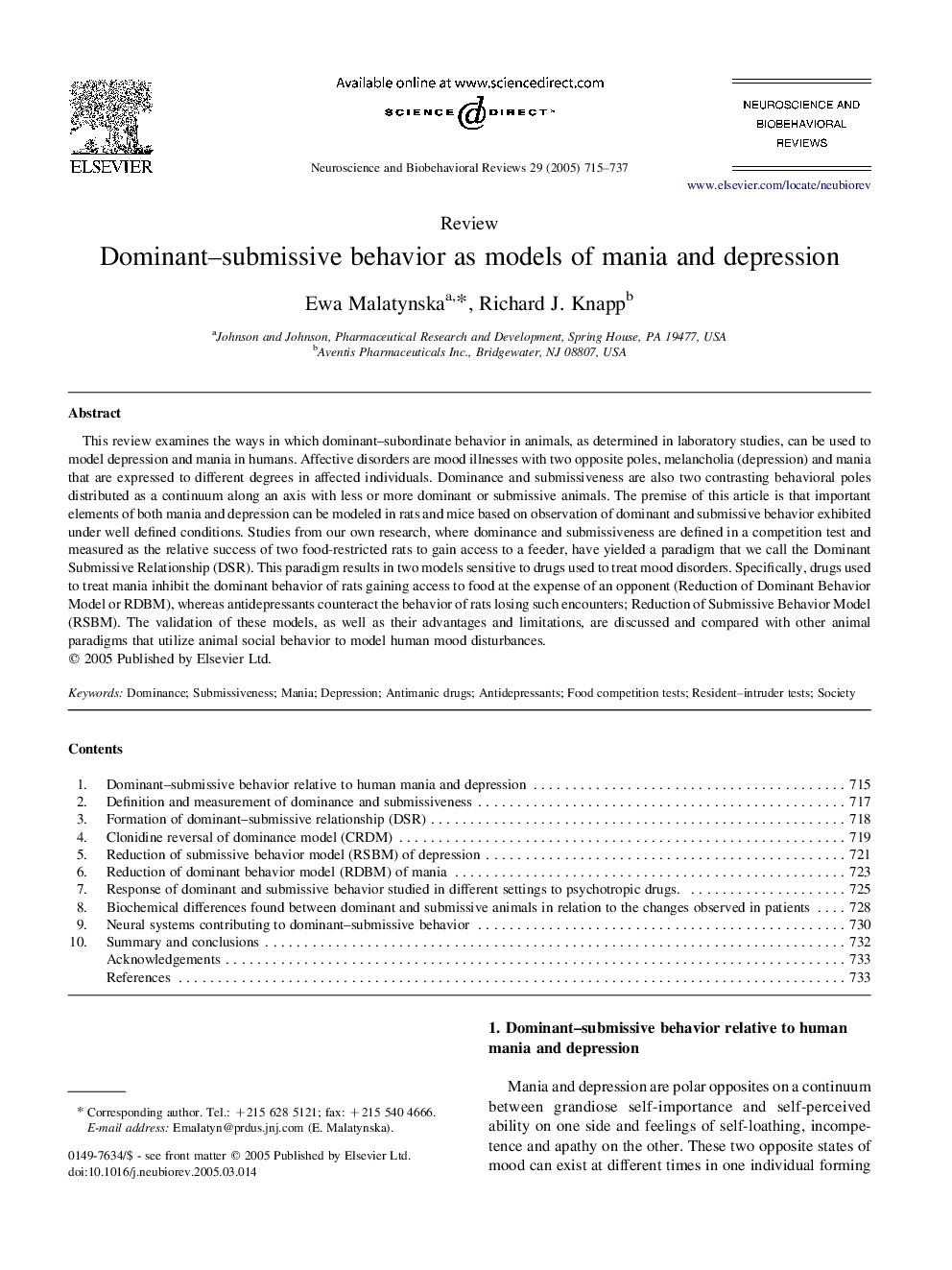| Article ID | Journal | Published Year | Pages | File Type |
|---|---|---|---|---|
| 9723591 | Neuroscience & Biobehavioral Reviews | 2005 | 23 Pages |
Abstract
This review examines the ways in which dominant-subordinate behavior in animals, as determined in laboratory studies, can be used to model depression and mania in humans. Affective disorders are mood illnesses with two opposite poles, melancholia (depression) and mania that are expressed to different degrees in affected individuals. Dominance and submissiveness are also two contrasting behavioral poles distributed as a continuum along an axis with less or more dominant or submissive animals. The premise of this article is that important elements of both mania and depression can be modeled in rats and mice based on observation of dominant and submissive behavior exhibited under well defined conditions. Studies from our own research, where dominance and submissiveness are defined in a competition test and measured as the relative success of two food-restricted rats to gain access to a feeder, have yielded a paradigm that we call the Dominant Submissive Relationship (DSR). This paradigm results in two models sensitive to drugs used to treat mood disorders. Specifically, drugs used to treat mania inhibit the dominant behavior of rats gaining access to food at the expense of an opponent (Reduction of Dominant Behavior Model or RDBM), whereas antidepressants counteract the behavior of rats losing such encounters; Reduction of Submissive Behavior Model (RSBM). The validation of these models, as well as their advantages and limitations, are discussed and compared with other animal paradigms that utilize animal social behavior to model human mood disturbances.
Related Topics
Life Sciences
Neuroscience
Behavioral Neuroscience
Authors
Ewa Malatynska, Richard J. Knapp,
